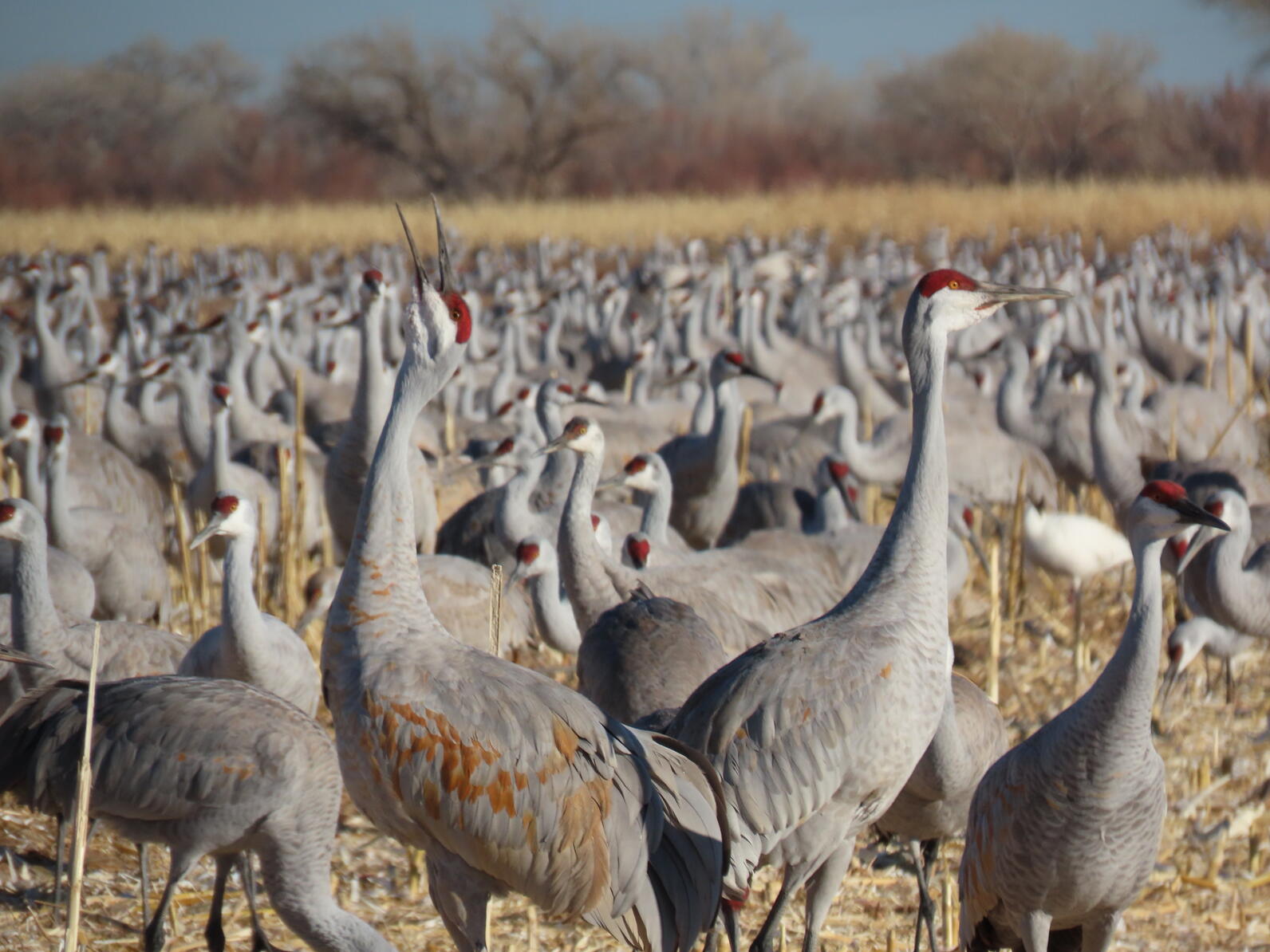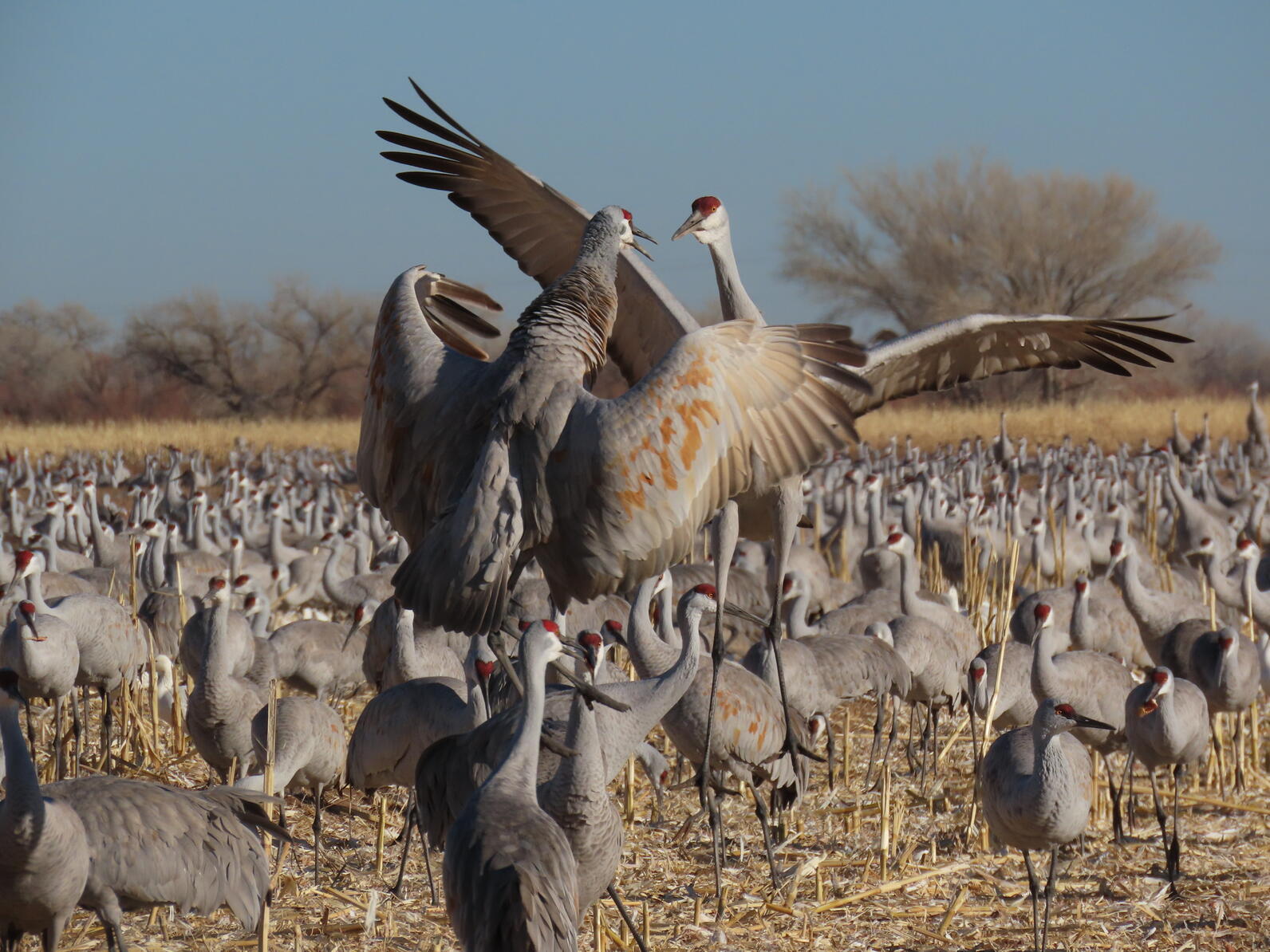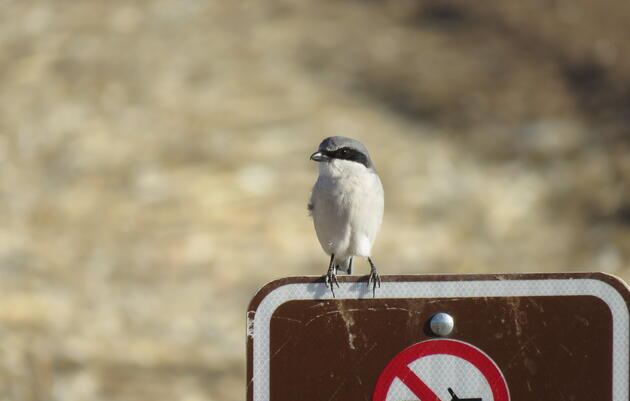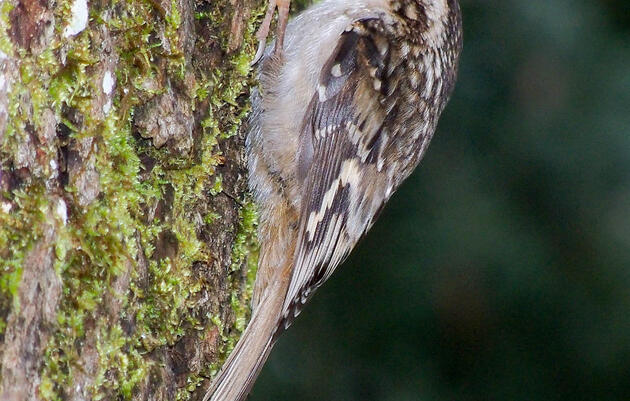Growing up on the Rio Grande in Northern New Mexico, Sandhill Crane migration was, and still is, a magical and exciting time for me. Autumn approaches with the colorful changing of the cottonwoods and aspens, chile harvest and roasting, as well as the gradual change of light and temperature. However, my favorite sign of Fall was when my neighboring grandparents or my folks would call over the phone or rush inside exclaiming, “The grullas are here!” Grulla is Spanish for crane and is how we always referred to the Sandhill Cranes. We would rush outside and listen for the almost prehistoric call then look for the grey V of majestic birds flying in family groups south over the river valley. This migration begins from nesting grounds in Alaska, Canada, and sometimes as far as Siberia.

Along with observing the brief window of travel for these incredible visitors, I was fortunate to share an annual family tradition (much like the cranes themselves) of traveling south to Socorro in November or December to enjoy the cranes at Bosque Del Apache in San Antonio, NM. We would stay in Socorro but would make sure to be at the wildlife refuge before dawn and often stayed after sunset, immersing ourselves in the breathtaking behavior of the grullas in one of their winter homes. This year was very different for family traditions due to COVID-19. We decided that it was not a smart idea to travel and stay in Socorro to enjoy the cranes, and the 3 ½ hour drive one way wasn’t realistic for a day visit. I had always heard how wonderful the Bernardo Wildlife Area was but had never been because our tradition was always to visit Bosque Del Apache.

Bernardo Wildlife Area is a hidden gem for Sandhill Crane enthusiasts. Located between Belen and Socorro, this 1,675-acre refuge was established to provide winter habitat for waterfowl, as well as Sandhill Cranes. Though the area is much smaller, Bernardo is very similar to Bosque Del Apache. Grullas utilize the floodplains, marshland and riparian habitats. Here they roost at night, huddled close in the shallow waters to be somewhat protected from predators. Around sunrise, they all take flight in their small family groups traveling the short distances to the surrounding pastures where they feed on planted fields of corn and grain as well as small insects and vertebrates. There seem to be just as many grullas here with the ability to get much closer to enjoy the wildlife. There are a lot less snow geese than the Bosque, who always amaze viewers with their early morning mass ascension. The feeling was more intimate at Bernardo, with nice viewing areas near a flooded marsh, several viewing platforms around the grazing fields, and a pleasant loop to drive around the area. What I was most surprised about was the number of visitors; we were one of five groups that I noticed during the 4 hours we spent appreciating the thousands of cranes dancing, calling, socializing and feeding. In this difficult time, it is possible to safely enjoy these natural phenomena, with Bernardo being a special place to marvel at the glorious grulla.






